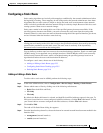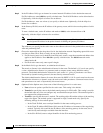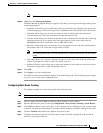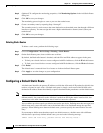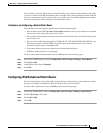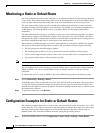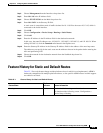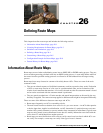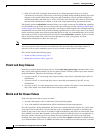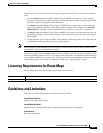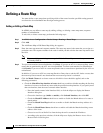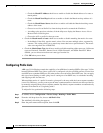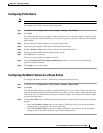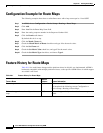
CHAPTER
26-1
Cisco ASA 5500 Series Configuration Guide using ASDM
26
Defining Route Maps
This chapter describes route maps and includes the following sections:
• Information About Route Maps, page 26-1
• Licensing Requirements for Route Maps, page 26-3
• Guidelines and Limitations, page 26-3
• Defining a Route Map, page 26-4
• Customizing a Route Map, page 26-5
• Configuration Example for Route Maps, page 26-8
• Feature History for Route Maps, page 26-8
Information About Route Maps
Route maps are used when redistributing routes into an OSPF, RIP, or EIGRP routing process. They are
also used when generating a default route into an OSPF routing process. A route map defines which of
the routes from the specified routing protocol are allowed to be redistributed into the target routing
process.
Route maps have many features in common with widely known ACLs. These are some of the traits
common to both:
• They are an ordered sequence of individual statements, each has a permit or deny result. Evaluation
of ACL or route maps consists of a list scan, in a predetermined order, and an evaluation of the
criteria of each statement that matches. A list scan is aborted once the first statement match is found
and an action associated with the statement match is performed.
• They are generic mechanisms—Criteria matches and match interpretation are dictated by the way
that they are applied. The same route map applied to different tasks might be interpreted differently.
These are some of the differences between route maps and ACLs:
• Route maps frequently use ACLs as matching criteria.
• The main result from the evaluation of an access list is a yes or no answer—An ACL either permits
or denies input data. Applied to redistribution, an ACL determines if a particular route can (route
matches ACLs permit statement) or can not (matches deny statement) be redistributed. Typical route
maps not only permit (some) redistributed routes but also modify information associated with the
route, when it is redistributed into another protocol.
• Route maps are more flexible than ACLs and can verify routes based on criteria which ACLs can
not verify. For example, a route map can verify if the type of route is internal.



